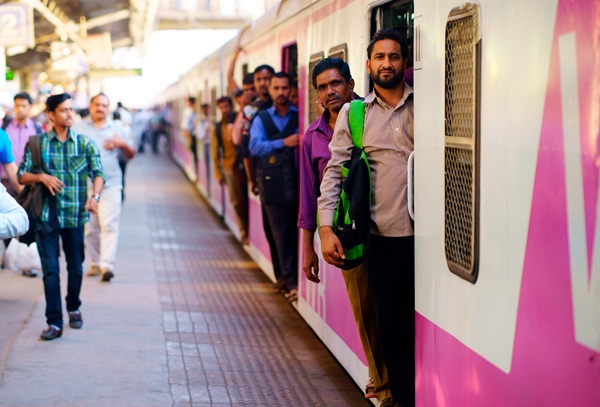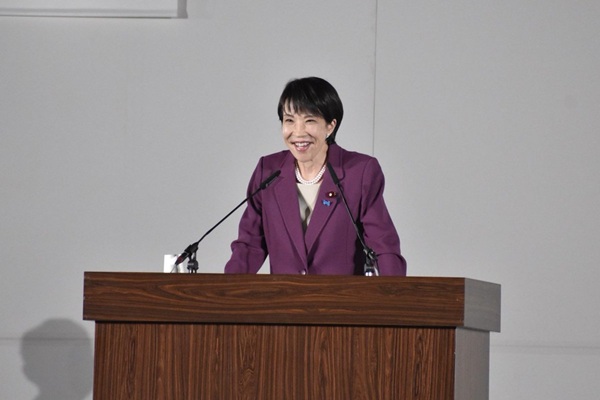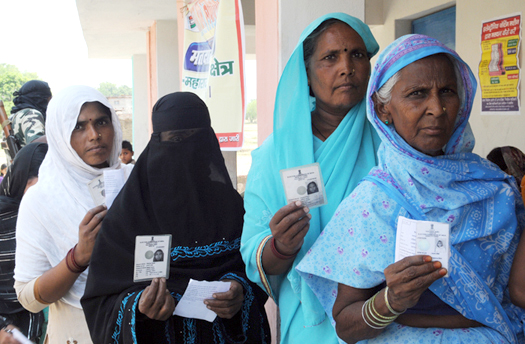.png)
Mumbai’s Happy Paradox: Leaky Tunnels, Unbreakable Spirit
How can a city of crumbling infrastructure and brutal rents be Asia’s happiest? The answer, as it turns out, lies not in statistics or city planning, but in people and paradoxes.

Phynix is a seasoned journalist who revels in playful, unconventional narration, blending quirky storytelling with measured, precise editing. Her work embodies a dual mastery of creative flair and steadfast rigor.
November 9, 2025 at 7:48 AM IST
Dear Insighter,
Time Out’s City Life Index 2025 has crowned Mumbai the happiest city in Asia. Ninety-four percent of Mumbaikars say the city makes them happy. Eighty-nine percent feel happier here than anywhere else. Eighty-eight percent say people seem cheerful. And eighty-seven percent believe happiness has grown in recent years.
Pause for a second. These are astonishing numbers for a city where a decent 1BHK can set you back ₹50,000 a month, where roads disintegrate faster than a politician’s promise, and where the Coastal Road (a ₹130–140 billion project) is already leaking in places. Mumbai’s “quality of life” score is the statistical equivalent of magic realism.
But maybe that’s the point. The survey questioned just 18,000 people worldwide. A small sample to define billions of urban lives, as if you could map the monsoon from three puddles. And yet, maybe the statistic isn’t wrong; maybe it captures something deeper: the curious mix of chaos, warmth, and resilience that makes Mumbai tick.
No one here pretends the city works perfectly. The trains are packed, the drainage clogs, and the rents hurt. But between the vada pav stand and the 8:04 local, the city screams authenticity. Mumbaikars don’t smile out of politeness; they smile because they’ve made peace with the madness. Everyone’s hustling, always on the move. And somehow, that relentless motion keeps despair at bay. If you’re running fast enough, you may not notice the potholes.
This week, with social media buzzing about Zohran Mamdani’s win in New York, the parallels between the two cities felt uncanny. Both are financial capitals; both pulsate with ambition and art; both are civic paradoxes held together by their people. It’s a peculiar form of civic pride — loving a place not despite its flaws, but through them.
That same tension runs through India’s financial and policy landscape. As R. Gurumurthy notes, India’s banks are a case study in safety gone stale. In saving them from collapse, regulators may have saved them from competition. The métier of banking — risk-taking, capital allocation, creative lending — has been sterilised. Our banks are prudentially perfect but commercially primitive, turning into risk-light utilities: predictable, large, and dull. Profits climb, but purpose wanes.
And that instinct to overprotect is everywhere. Sanjay Mansabdar points to SEBI’s recent decision to triple the Nifty futures lot size to 75, effectively shutting out smaller retail traders. Ostensibly a safety measure, it forces them into the far riskier world of options trading, where 93% lose money. Regulation meant to protect ends up excluding.
The same caution marks our approach to foreign capital. Srinath Sridharan highlights the policy confusion over FDI in inventory-based e-commerce. Allowing it only for exports is neither bold liberalisation nor clear prohibition. It’s a halfway house that breeds uncertainty, offering investors a seat at the table, but forbidding them to eat.
Meanwhile, our bond markets could use a revival of trust. Venkatakrishnan Srinivasan recalls the days when people queued outside banks for tax-free bonds. Those issues combined safety, simplicity, and satisfaction. Today, the corporate bond market has gone quiet, with public issues plunging from ₹190 billion in 2023–24 to barely ₹50 billion this year. SEBI’s efforts to reawaken that market, along with its push for transparency in mutual fund fees, as Sridharan also argues, are crucial steps toward restoring investor faith.
And faith, more than anything, is what markets run on.
Sometimes, what looks like victory hides a trap. Babuji K’s analysis of India’s bond auctions describes the “winner’s curse”, where the top bidder ends up overpaying. It’s a cautionary tale for markets, but also for life: some wins aren’t worth their price.
Sona Comstar offers a corporate echo of that lesson. As Sohini Ghosh reports, what began as a family inheritance dispute after Sanjay Kapur’s death has turned into a governance reckoning. Kapur’s quiet discipline built a ₹300-billion auto components empire. Now, its challenge is not engineering precision but family alignment.
Even institutions designed for fairness are being tested. Anupam Sonal recounts how the Bombay High Court reprimanded the RBI’s Integrated Ombudsman for dismissing a ₹20-million digital-fraud complaint without a hearing. In an era where scams spread at 5G speed, justice can’t afford 2G reflexes.
The macro picture, as Dhananjay Sinha writes, is one of steady growth masking private-sector hesitation. India boasts 6.5–7% GDP growth, yet the revival of private capex remains elusive. We’ve achieved macro stability without micro dynamism. The rhetoric of self-reliance can’t fill that gap; only genuine confidence in the private sector can.
Trade adds another stress line. Ajay Srivastava of GTRI warns that India’s exports to the U.S. fell 37.5% between May and September 2025, hit by escalating tariffs. Without intervention, we risk losing market share to Vietnam, Mexico, and China. Simultaneously, India’s steel sector, as Srivastava’s broader analysis shows, is caught between protectionism and competitiveness, shielded by tariffs that may actually be dulling its edge.
The commodities story tells a similar truth. G. Chandrashekhar sounds two alarms: one about edible oils, the other about copper. Of India’s nine recognised oilseeds, only five meaningfully feed our kitchens; others serve industrial use. A sharper focus on sunflower and other productive crops could ease import dependence. But it’s copper that could short-circuit our green ambitions. Every EV, solar panel, and charging station depends on it, yet we remain import-dependent. Without a coherent metals strategy, our 2070 net-zero pledge risks failure not from lack of intent, but from lack of copper.
And while global diplomacy adds theatre — with TK Arun musing on how Canadian PM Mark Carney’s apology to Donald Trump might complicate India–US trade talks — the core issue remains the same: coherence. Policy, like happiness, needs consistency more than grandeur.
Arvind Mayaram reminds us that India’s urban challenge isn’t just about megacities. The Smart Cities Mission, launched in 2014 with ₹1.5 trillion in projects, mostly delivered LED lights and Wi-Fi poles — improvements, yes, but not transformation. With urbanisation expected to touch 40% by 2036, India must build livable towns, not just retrofit its metros. Otherwise, our urban dream will buckle under its own weight.
Corporate India too faces a moment of introspection. Bharti Airtel’s latest quarter, Krishnadevan V notes, showed strong margins and rising ARPU, but offered little clarity on future capex plans. Performance buys goodwill, but uncertainty breeds risk premiums. Airtel, like many Indian firms, must articulate not just results, but vision.
Across the Pacific, Nvidia’s ascent offers lessons in both ambition and accessibility. Chandrika Soyantar traces its journey from $4 trillion to $5 trillion in market value, fuelled by AI dominance and smart stock splits that widened retail participation. In India, Nestlé’s split did the same, boosting shareholder counts by 151%. Accessibility can amplify wealth creation, but Soyantar warns: splits are energy, not essence. Real value flows from innovation, not accounting optics.
And innovation is exactly what R. Gurumurthy explores again, this time through Meta’s $27 billion Hyperion financing. Structured through a special-purpose vehicle, it lets Meta orchestrate capital and control without owning everything outright. The modern corporation, Gurumurthy argues, thrives by designing the flows of capital, technology, and trust — a far cry from the old model of empire-building through ownership.
This, too, mirrors Mumbai: the city doesn’t own its rhythm; it orchestrates it.
If the city’s resilience offers one model of progress, the Nobel economists offer another. Hemachandra Padhan synthesises lessons from recent laureates — Goldin on gender inclusion, Acemoglu and Robinson on institutions, Mokyr and Aghion on innovation. Together, they outline a template for growth: empower people, reform structures, and embrace creative destruction. India’s $7-trillion dream won’t be realised by capital or consumption alone; it will rest on how we unlock human potential.
Democracy, too, is testing its reflexes. Amitabh Tiwari reports that as Bihar’s 2025 elections begin, 121 constituencies will decide the state’s next government. The wildcard? Prashant Kishor’s Jan Suraj Party, contesting 118 seats — enough to disrupt traditional equations.
So how do we make sense of all this: the paradox of thriving amid dysfunction, of progress that limps, of happiness that persists?
Maybe Mumbai holds the answer. The city’s joy doesn’t come from comfort or efficiency; it comes from participation. From showing up anyway. From finding warmth in indifference and purpose in chaos. Yes, the road’s leaking again, but the vada pav’s still hot, and opportunities are within reach.
Our economic policies, our corporate governance, even our politics could learn from that. Happiness, like growth, isn’t about perfection. It’s about motion, resilience, and the stubborn hope that tomorrow’s train will still arrive — maybe late, maybe crowded, but always moving forward.
Until next time,
Phynix
Yours in the glorious, chaotic struggle.
Also Read:
- The Quiet Allure of Johatsu by Kalyani Srinath: In Japan, some people simply vanish, not in despair, but in search of a quiet freedom.
- The Wine and the Wallet by Kirti Tarang Pande: Why clutching your money too tightly might be the very thing that keeps you from true wealth.
- Is Bessent Right About the Fed? by Willem H. Buiter: A critical look at whether the Fed's unconventional policies inflated bubbles and blurred its mandate.
- The Fraught Politics of Corporate Disclosures by Raghuram Rajan: Is ESG a passing political fad or a new, non-negotiable financial reality?
- The Three Technologies Disrupting the Global Order by Mark Blyth and Daniel Driscoll: How cheap drones, smartphones, and solar tech are unexpectedly tilting the global balance of power.
- China’s Rare-Earth Own Goal by Daniel Gros: The conventional wisdom on rare earths is wrong; China's dominance may be its own strategic vulnerability.
- Can China Catch Up with the US Economically? by Keun Lee: The path to economic supremacy is fraught with internal contradictions and regional disparities.
- Signals From the City by Lt Gen Syed Ata Hasnain: What Zohran Mamdani's New York victory tells us about a generational shift in leadership and civic values.



